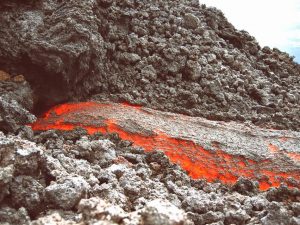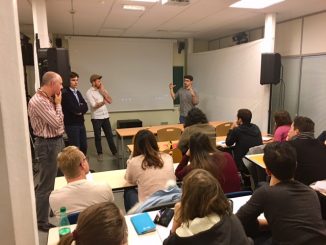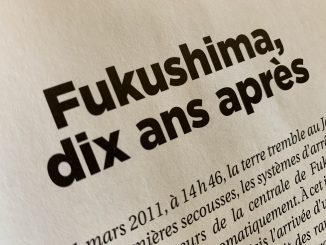 Du 29 juin au 2 juillet, Yoann Moreau a participé à la 11ème conférence de l’European Society for Oceanists (ESO). Dans le cadre du panel Natural disaster in Oceania il a présenté un cas exemplaire de divergence dans la perception des catastrophes. Considérant les réactions des populations présentes à Ambrym (archipel du Vanuatu, Pacifique sud) confrontée à la terrible éruption volcanique de 1913, il observe une asymétrie d’interprétation entre populations autochtones et étrangers présents sur place. Car une autre catastrophe était en cours à laquelle l’éruption vient mettre un terme : la colonisation de l’île. L’analyse croisée de ce syndrome d’aléas montre de quelle manière mondes et catastrophes sont intimement liés. Il n’y a de désordre que relativement à un ordre établi.
Du 29 juin au 2 juillet, Yoann Moreau a participé à la 11ème conférence de l’European Society for Oceanists (ESO). Dans le cadre du panel Natural disaster in Oceania il a présenté un cas exemplaire de divergence dans la perception des catastrophes. Considérant les réactions des populations présentes à Ambrym (archipel du Vanuatu, Pacifique sud) confrontée à la terrible éruption volcanique de 1913, il observe une asymétrie d’interprétation entre populations autochtones et étrangers présents sur place. Car une autre catastrophe était en cours à laquelle l’éruption vient mettre un terme : la colonisation de l’île. L’analyse croisée de ce syndrome d’aléas montre de quelle manière mondes et catastrophes sont intimement liés. Il n’y a de désordre que relativement à un ordre établi.
Voici le résumé en anglais de sa communication :
The case study, which concerns one of the largest volcanic eruptions of the twentieth century (at Ambrym in 1913), will allow us to illustrate one of the linchpins for an anthropological understanding of the relations between human societies and factors that threaten their very existences. There is no catastrophe, that is to say disorder, but what is relative to a cosmology, that is to say relative to a historically established order. In other words, human societies evaluate the risks and dangers that could happen to them by the light of their own world view.







